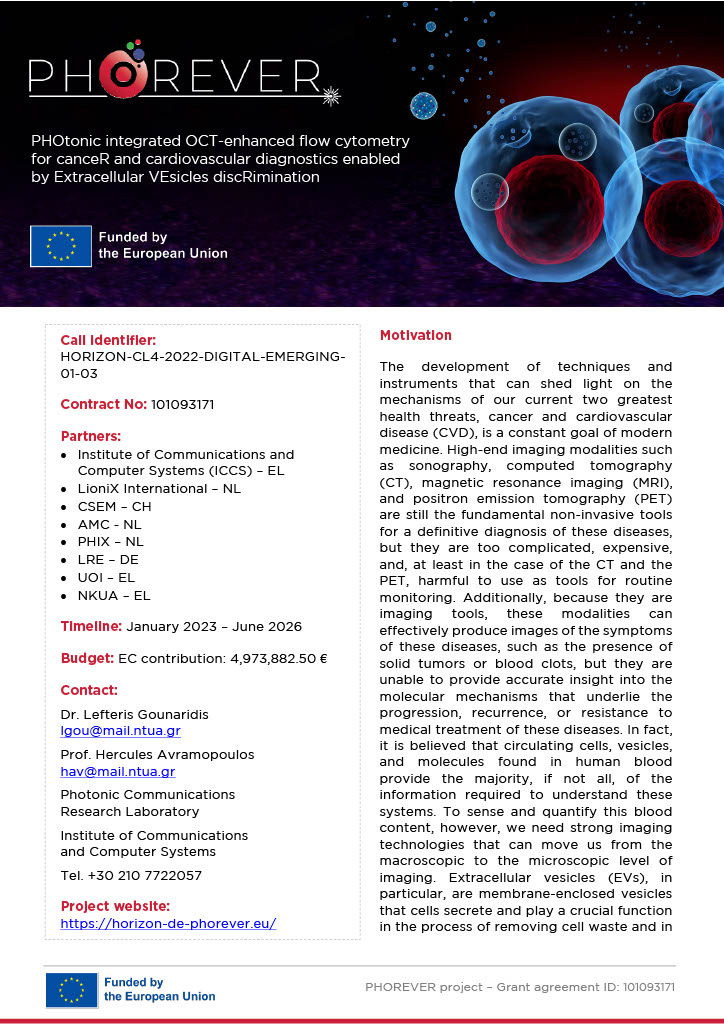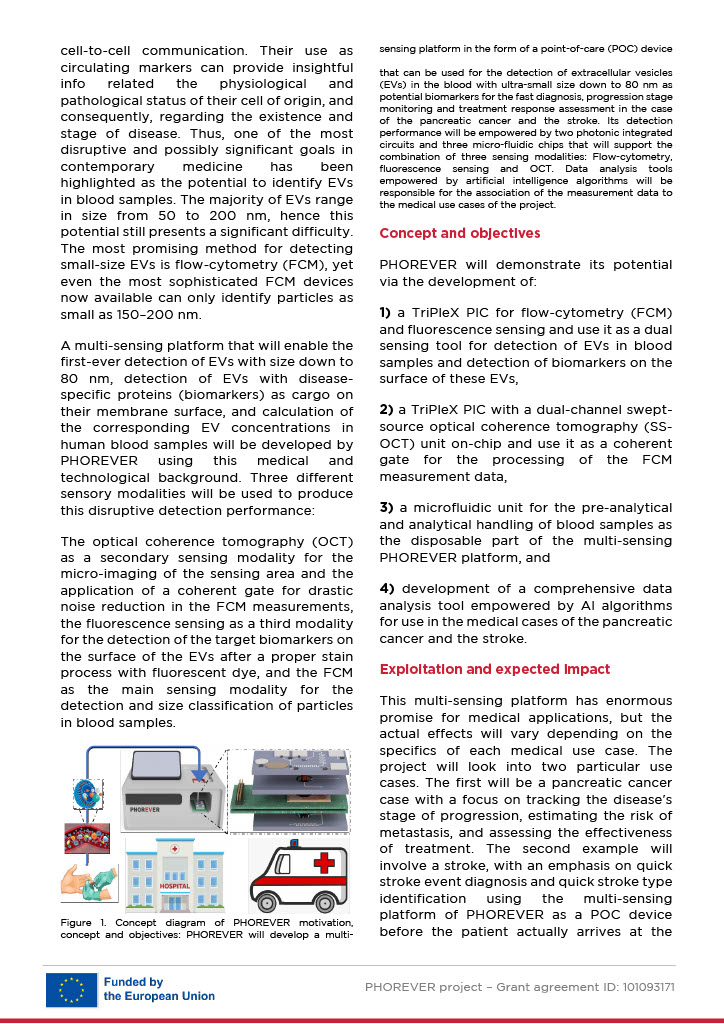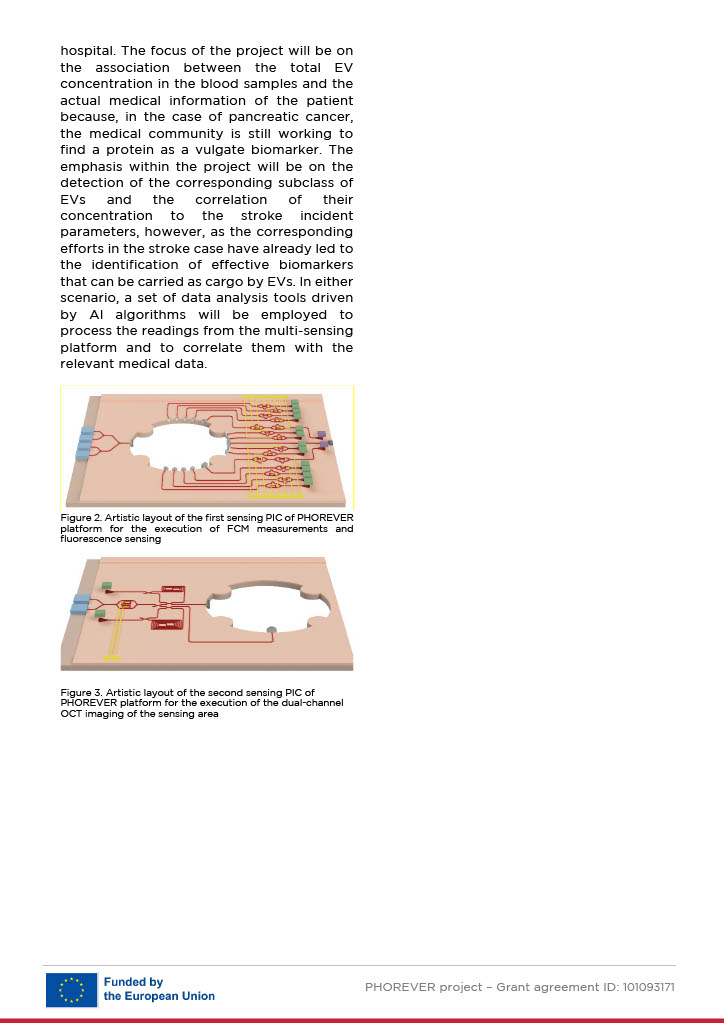PHOtonic integrated OCT-enhanced flow cytometry for canceR and cardiovascular diagnostics enabled by Extracellular VEsicles discRimination
With an impressive medical and technical background, PHOREVER steps in with the ambitious vision to develop a multi-sensing platform that will enable for the first-time:
- the detection of EVs with size down to 80 nm
- the detection of EVs with disease-specific proteins (biomarkers) as cargo on their membrane surface
- the calculation of the corresponding EV concentrations in human blood samples
With this medical and technical background, PHOREVER steps in with the ambitious vision to develop a multi-sensing platform that will enable for the first-time a) the detection of EVs with size down to 80 nm, b) the detection of EVs with disease-specific proteins (biomarkers) as cargo on their membrane surface, and c) the calculation of the corresponding EV concentrations in human blood samples. This disruptive detection performance will be enabled by the combination of three distinct sensing modalities: the FCM as the main sensing modality for the detection and size classification of particles in blood samples, the optical coherence tomography (OCT) as a second sensing modality for the micro-imaging of the sensing area and the application of a coherent gate for drastic noise reduction in the FCM measurements, and the fluorescence sensing as a third modality for the detection of the target biomarkers on the surface of the EVs after a proper stain process with fluorescent antibodies. Based on the development and the use of two photonic integrated circuits (PICs) and three microfluidic chips as the key components of the multi-sensing platform, its expected breakthrough will not be only with respect to the detection performance but also the intended type of use. The platform will be powerful, but still cheap and compact, and will be designed as a point of care (POC) device for diagnosis, progression monitoring and treatment assessment of diseases such as the cancer and the CVD.
The potential medical impact of this multi-sensing platform is huge, but the actual impact will depend on a case-by-case basis on the background of the medical use cases. Two specific use cases will be investigated within the project. The first will be the case of the pancreatic cancer with focus on the monitoring of the progression stage of the disease, the assessment of the metastasis risk, and the evaluation of the treatment efficacy. The second will be the case of the stroke with focus on the fast diagnosis of the stroke incident and the fast identification of the stroke type using the multi-sensing platform of PHOREVER as a POC device before the actual arrival at the hospital. Since in the case of the pancreatic cancer, the effort by the medical community to identify a protein as a vulgate biomarker is still ongoing, the focus within the project will be on the correlation of the total EV concentration in the blood samples to the actual medical data of the patient. On the other hand, since the corresponding efforts in the stroke case have already resulted in the identification of effective biomarkers that can be carried as cargo by EVs, the focus within the project will be on the detection of the corresponding subclass of EVs and the correlation of their concentration to the stroke incident parameters. In either case, a set of data analysis tools empowered by artificial intelligence (AI) algorithms will be used for the processing of the measurements from the multi-sensing platform, and for their correlation to the corresponding medical data. Within this context, the step-wise approach for the realization of the development plan of PHOREVER, both at the technology and at the biomedical level is outlined through the following eight objectives.




